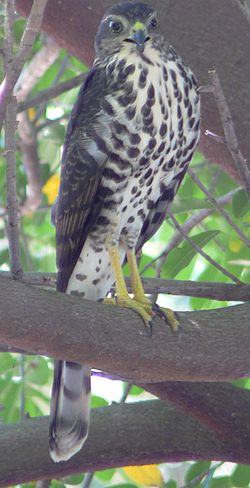| Little sparrowhawk | |
|---|---|
 | |
 | |
| At Phinda Game Reserve, South Africa, showing ventral and dorsal plumage | |
| Scientific classification | |
| Domain: | Eukaryota |
| Kingdom: | Animalia |
| Phylum: | Chordata |
| Class: | Aves |
| Order: | Accipitriformes |
| Family: | Accipitridae |
| Genus: | Tachyspiza |
| Species: | T. minulla |
| Binomial name | |
| Tachyspiza minulla (Daudin, 1800) | |
| Subspecies | |
| |
| Synonyms [2] | |
| |

The little sparrowhawk (Tachyspiza minulla) is a species of Afrotropical bird of prey in the family Accipitridae. It was formerly placed in the genus Accipiter . It is the smallest member of the genus Tachyspiza and forms a superspecies with the red-thighed sparrowhawk (Tachyspiza erythropus).


